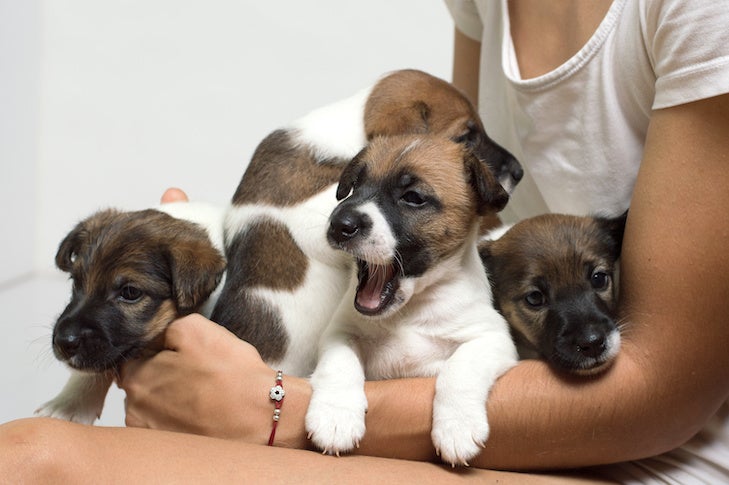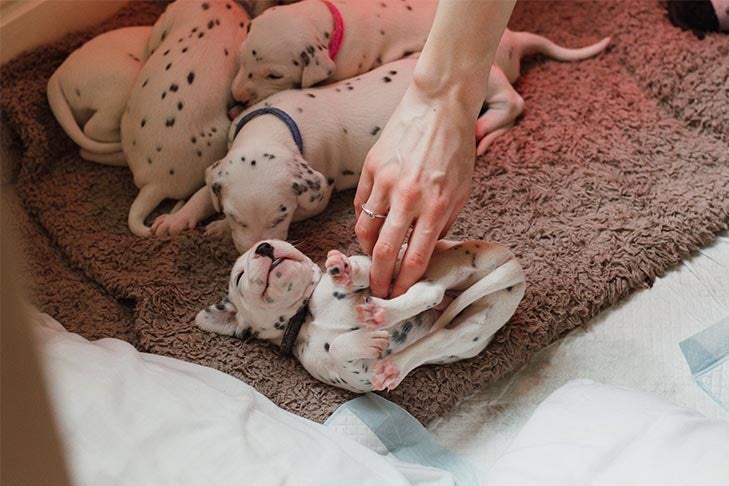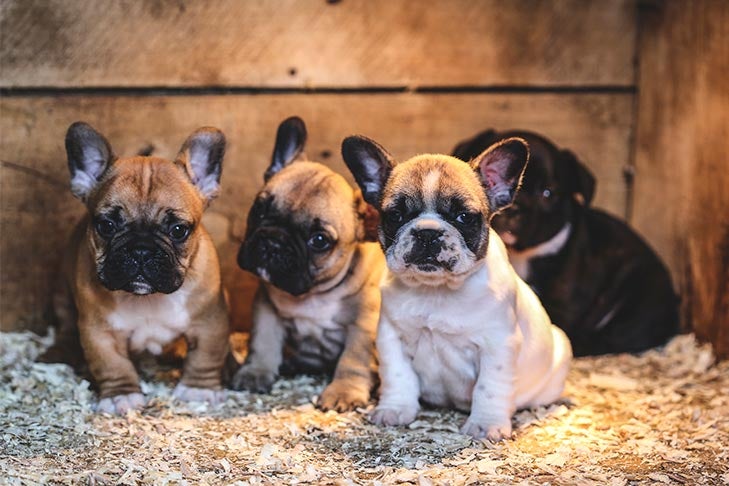
It’s been almost a decade since Sharon Gardner of Austin, Texas, had her most devastating experience as a Rhodesian Ridgeback breeder.
With no warning, her litter of five-and-a-half-week-old puppies began showing signs of lethargy. Then came the diarrhea and vomiting. A test performed by her veterinarian delivered the bleak diagnosis: parvovirus, a highly contagious disease that is frequently fatal in young puppies.
All 12 puppies were placed in the intensive-care units of two vet clinics, where they received round-the-clock care, including intravenous fluids to keep them hydrated and medicated, and feeding tubes to deliver much-needed nourishment.
After nearly a month in quarantine, “my once-fat, healthy puppies were reduced to skin and bones,” Gardner remembers. “It got to the point where their veins couldn’t handle the IVs anymore. I made twice-daily trips to each vet clinic to check on them, hold them when I could, and make those dreaded decisions about the ones that were suffering too badly.”
After what Gardner describes as “a rollercoaster of near-death to recovery back to near-death,” only seven puppies of the original 12 survived.
Breeder Biosafety Tactics Help Prevent Disease
Similar to Gardner’s tragic parvo experience, the COVID-19 pandemic has created a heightened awareness about how quickly some infectious diseases can be transmitted. To be sure, these two diseases aren’t related: Humans can’t catch parvovirus, and dogs aren’t sickened by this novel coronavirus. But both are highly infectious, and both require awareness of how social contact and public spaces can spread them, especially to those vulnerable individuals who are at the greatest risk.
In that respect, dog breeders—and the precautions they take to avoid transmitting infectious diseases like parvovirus—offer valuable lessons about how diligence can save lives.
Puppies acquire immunity to diseases—including the parvovirus that decimated Gardner’s long-ago litter —when they nurse on their dam’s antibody-rich first milk, called colostrum. And when puppies receive their first inoculations, their bodies begin to develop antibodies to fend off disease, should they ever be exposed to them.
But it is that in-between time—when maternally conferred immunity wanes and before that first round of vaccinations—that puppies are most vulnerable. During that interlude, many breeders institute biosafety measures that echo many of the precautions that we are learning to take in the age of the coronavirus.

Judge and Dandie Dinmont breeder Betty-Anne Stenmark, who like many Californians is self-quarantining, says that the current pandemic reminds her very much of the early 1980s, “when parvovirus raged and dogs died everywhere.” At the veterinary clinic where she worked at the time, “we had many, many dogs and puppies come in with it,” Stenmark remembers, “and our isolation ward was full.”
Returning from work each day, Stenmark removed her clothes before going home and dipped her shoes in a solution of bleach and water. “In those days, we avoided other dogs and did not walk our puppies until they were fully vaccinated and protected.”
While parvovirus today is largely under control in many parts of the country, reputable breeders are still acutely aware that it can rear its head suddenly, and, like Stenmark, do everything they can to prevent tracking deadly pathogens into their homes and kennels.
“When we have a litter, we try to isolate them from outside biologic contact,” says Eric Liebes, who breeds Siberian Huskies and Komondors with his wife, fellow judge Joan Luna Liebes. “So mom is the only dog who can come into the room they are in.”
If they leave their Colorado home, and especially if they are in contact with other dogs in that time, the couple has a ritual for re-entry. “When we get home, our shoes are left in the garage, and we undress into the washing machine in our mud-room entrance,” he explains. “Then we wash up before greeting the litter or mom.”
Any fabric or material used in the whelping box is laundered with bleach, resulting in a collection of artfully splotched dog towels. And keeping a stockpile of bleach and disinfecting wipes is such a normal part of their husbandry that Liebes notes they were not caught empty-handed when the huge demand for similar items welled up during the beginning of the COVID-19 pandemic.
To avoid infectious diseases when they have a litter, many breeders will steer clear of any locations that have a high density of other dogs, such as dog parks, pet stores, training classes, or dog shows. And they will grill any prospective visitors, asking if they have visited similar locations. Others remove the risk entirely by simply not permitting any contact from strangers with the new puppies, relying instead on close friends and family to visit and provide required socialization.
“I don’t let anyone see pups until they are ready to go home. That day is the only day anyone other than our family interacts with them,” says Dogo Argentino breeder Joshua Faulkner of Long Island, New York, who also takes sanitary measures like using dedicated shoes for the room where the puppies are reared.
To satisfy “puppyitis” on the part of soon-to-be owners, Faulker sends future puppy owners videos and photos. But like many serious breeders, he doesn’t commit a specific puppy to a buyer, waiting instead to properly evaluate the puppies when they are older. (Typically, most breeders finalize their “keepers” at around eight weeks of age, though for slow-maturing toy breeds that decision can come even later.)
“People buy from me because they trust me,” not because they fall for any one puppy, he says. “But I always stress [out about the times] that the puppy someone gets in their heart will be the same one I pick for myself.”

Breeders Must Be Ready for Anything
Breeding dogs has its parallels to the current pandemic crisis in other ways: the unexpected is always expected. Sharon Gardner has often thought back to that parvo litter, trying to figure out how her puppies became infected even though she and any visitors followed sanitary precautions like the ones described.
“I’ll probably never know for sure,” she says. But a neighbor told her that a couple of days before her puppies became sick, someone had been walking a young, noticeably ill pound puppy down the street. “At that particular time, we had a really bad influx of flies. You couldn’t open a door without 50 of them getting in the house.” Her theory? Perhaps the flies landed in that passerby puppies’ diarrhea, or someone brought it in on their clothes or shoes.
Of those seven surviving puppies, four went on to become champions, three became grand champions, and another was nationally ranked. But it took Gardner nearly five years before she was ready to have another litter. “I was petrified, and limited visitors to a few trusted individuals for socialization until the puppies had their first parvo shot at six and a half weeks,” she says. “I stopped just short of spraying people down with a bleach mixture before they entered my house.”
The lesson we can take from her experience, whether we are struggling for the best way to protect our dogs or ourselves? Be vigilant, think through potential exposure, avoid densely populated locations, and—because despite our best efforts some things are just out of our control—prepare for the worst, but always hold out hope for the best.
The AKC is here to help owners with questions and concerns about COVID-19 and dogs. Find answers to your questions, plus at-home activity ideas, training tips, educational resources, and more on our Coping With COVID-19 hub.

